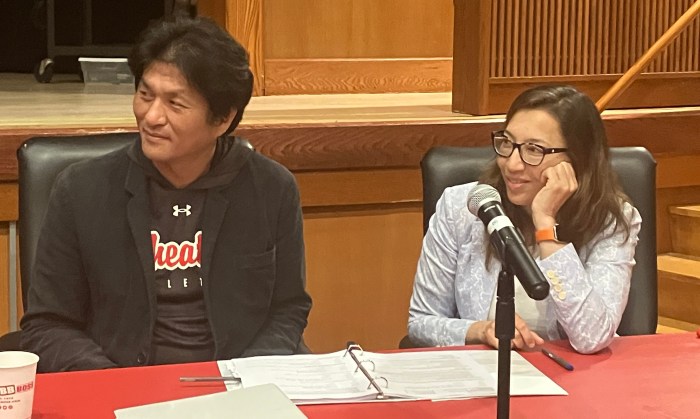The Carle Place School District Board of Education began its preliminary budget presentations last week, with discussions on changing arrival/dismissal times and bringing the incoming first grade down to four sections.
Superintendent Dave Flatley noted that the state-imposed 2 percent tax cap leaves the district a tax cap levy of approximately 1.18 percent. The budget-to-budget increase is 1.66 percent, or $803,236.
Some of the major drivers for this year’s budget included a $560,000 increase in health insurance, $114,000 increase in health/safety, $269,000 increase in general and special education and $75,000 increase in technology. The preliminary budget also includes $90,000 in additional funds to allow for more van services, to transport special education and Life Skills students.
One major topic of discussion during the meeting on Jan. 26 was staffing changes throughout the district. Approximately 30 parents and community members attended the meeting, with several voicing concern over the loss of a section for the kindergarten class heading into first- grade. This year’s kindergarten class currently has five sections and Flatley has recommended cutting that down to four sections of 21 students each. Parents questioned whether a larger class size would impede student learning and some asked if aides could be moved to the first-grade classrooms. But Flatley noted that there was no data to support that a class size of 21 would be a detriment to the children and that aides were more critical in the kindergarten classrooms, where it was more likely students were having their first experience in a school setting.
“A class of 21 is perfectly reasonably sized for a first-grade teacher,” Flatley said, noting that adding aides or a full-time teacher would result in a budget that exceeded the cap.
Other staffing changes included bringing the sixth-grade class up to five sections at 20 students each, and adding an inclusion class to second-grade. The inclusion class will put special education and general education students in one classroom for the entire day with teachers from both co-teaching the class.
“Currently, that’s our model at Rushmore and the middle school/high school,” Flatley said. “My recommendation is that we move that model into the second-grade.”
Flatley also suggested bringing a full-time and part-time AIS (Academic Intervention Services) teacher to Cherry Lane and Rushmore Avenue Schools, respectively, as well as the addition of a full-time enrichment teacher at Rushmore, which the school currently does not have.
“The purpose of the enrichment teacher is to provide special classes for students who move beyond the grade level of instruction,” Flatley said. “Having someone on staff who focuses on that particular need is analogous to having an academic intervention teacher.”
Flatley also discussed adding time to the school day at Cherry Lane and Rushmore, a switch that would have no effect on the budget but would result in significant instructional time. Flatley suggested changing arrival time at Cherry Lane from 8:45 to 8:30 a.m. and going to a 3 p.m. dismissal for all, including kindergarten students. The change to full-day kindergarten for the district’s youngest learners gives them nearly 40 additional days of instruction time and the extra 15 minutes each day gives the first and second graders 45 extra hours of learning over the school year.
At Rushmore, Flatley suggested arrival be moved from 8:10 to 7:55 a.m., with dismissal going from 2:30 to 2:25 p.m. The extra 10 minutes would result in 30 hours, more than a full week, of additional instructional time. In response to a parent question’s about why the change was made to start the days earlier, as opposed to end later, Flatley said that the buses were needed for afterschool activities.
The district will continue to hold budget presentations up until the vote on Tuesday, May 16. The next budget meeting will be held Thursday, Feb. 9.































